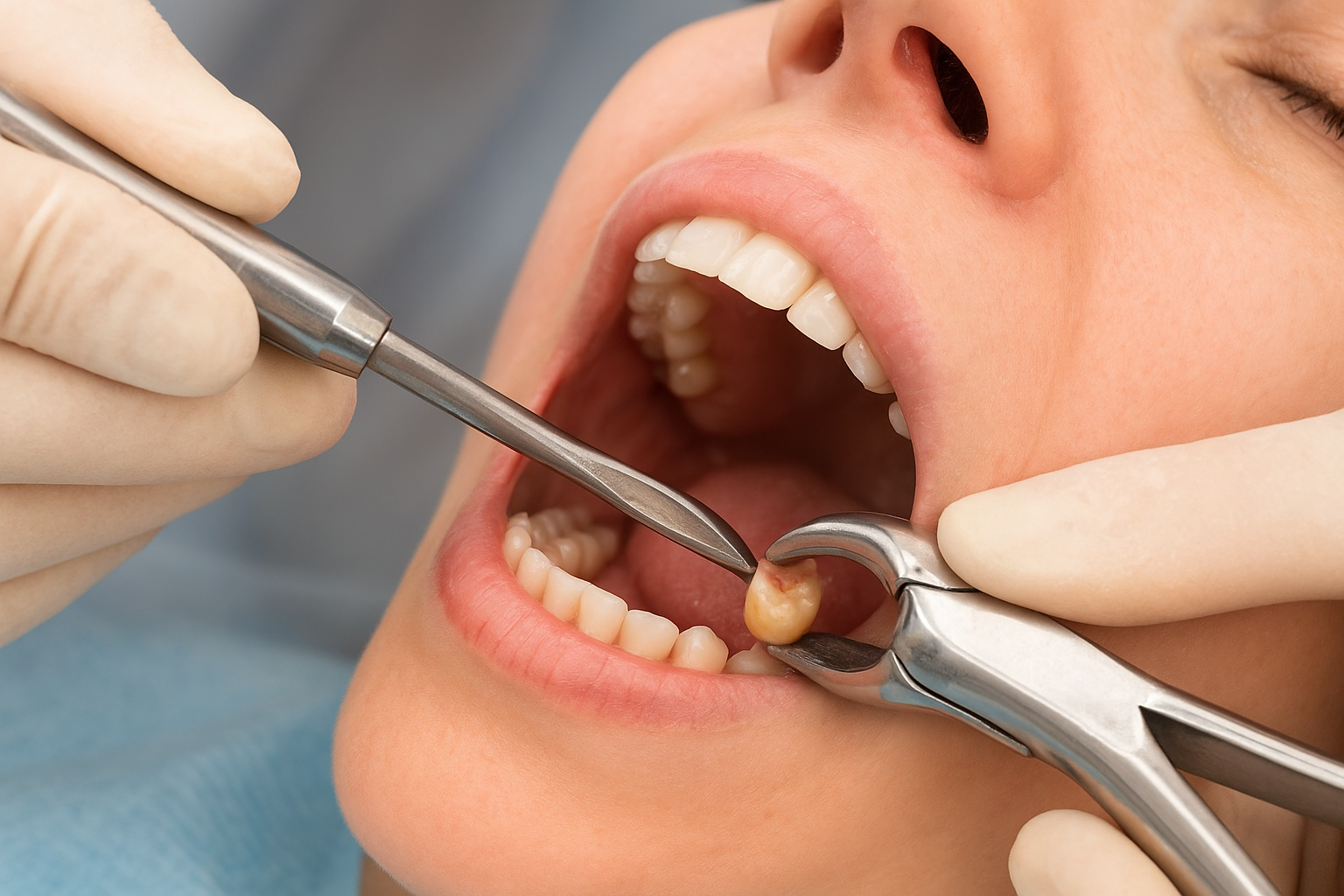Nobody wakes up excited about the idea of having a tooth pulled. But sometimes, a tooth extraction is the best way to protect your smile and overall oral health.
Think of it as hitting the reset button when a tooth causes more harm than good. Whether it’s due to decay, infection, or overcrowding, removing the problem tooth can bring much-needed relief.
When Is Tooth Extraction Necessary?
So, when does a dentist actually say, “This tooth has to go”? Here are the most common reasons:
- Severe tooth decay or infection – When a cavity has destroyed too much of the tooth and even root canal treatment won’t help.
- Gum disease – Advanced periodontal issues can loosen teeth, making extraction the only solution.
- Overcrowding – Before braces, some people need extra space created by removing a tooth.
- Impacted wisdom teeth – If they’re stuck under the gums or pushing against other teeth, extraction helps avoid pain and misalignment.
- Trauma or injury – A badly broken tooth may be beyond repair.
Types of Tooth Extraction
Not all extractions are the same. It depends on the condition of your tooth:
- Simple extraction – This is for visible teeth. The dentist loosens the tooth and removes it using special instruments.
- Surgical extraction – This is needed for impacted, broken, or hidden teeth. It may involve small incisions in the gum.
What to Expect During the Procedure
If you’re nervous, you’re not alone. But here’s what usually happens step by step:
- Consultation & X-rays – Your dentist checks the tooth and surrounding area.
- Local anesthesia & sedation options – You’ll feel pressure but not pain. Some patients also get sedation for extra comfort.
- The extraction itself – For a simple extraction, the dentist gently rocks the tooth loose before removing it. For surgical cases, a tiny cut may be made in the gum to access the tooth.
Most procedures are quicker than you’d expect, sometimes done in less time than your favorite TV show episode.
Recovery and Aftercare Tips
The real test begins once you’re back home. Here’s how to heal smoothly:
- Pain and swelling – Ice packs and prescribed pain relievers usually help.
- Diet adjustments – Stick to soft foods like yogurt, mashed potatoes, and smoothies. Avoid hot, spicy, or crunchy foods for a few days.
- Oral hygiene – Rinse gently with saltwater after 24 hours, but don’t brush near the extraction site too soon.
- Healing time – On average, most people feel normal in about 7–10 days.
Possible Risks and Complications
Tooth extractions are safe, but like any procedure, they have risks. Here’s what you should be aware of:
- Dry socket – When the blood clot protecting the site is lost, causing pain.
- Infection – Rare but possible, especially if aftercare is ignored.
- Nerve damage (very rare) – More likely with wisdom teeth.
The best way to avoid these? Follow your dentist’s aftercare instructions to the letter.
Conclusion
While the idea of a tooth extraction might sound intimidating, it’s actually one of the most common and safe dental treatments. Think of it as a way to help improve your oral health.
If you’re dealing with tooth pain, overcrowding, or wisdom teeth issues, don’t wait until it gets worse. Book a consultation with American Medical Center, where our dental team will guide you through the process with care and comfort.



